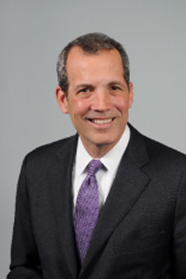 The ever-increasing cost of employer-sponsored health coverage is making it difficult for American businesses to compete globally. Until we try something different, there’s no end in sight. A staggering 6 in 10 adults in the U.S. have a chronic disease, and with these statistics, we can expect healthcare costs will continue to rise.
The ever-increasing cost of employer-sponsored health coverage is making it difficult for American businesses to compete globally. Until we try something different, there’s no end in sight. A staggering 6 in 10 adults in the U.S. have a chronic disease, and with these statistics, we can expect healthcare costs will continue to rise.
This dynamic is creating unnecessary friction between businesses and employees. How should employers balance what’s best for the company’s bottom line with what’s best for employees?
The ultimate answer is to improve employee health: identify health issues sooner, manage chronic disease more effectively, and achieve more efficient care and less waste. Given that around 80% of all healthcare services could be delivered on a primary care level, better primary care is a big part of the solution.
America’s primary care system needs desperate attention, funding, and repair. Around 5% of U.S. healthcare spending goes to primary care, as opposed to 14% in other wealthy countries. And the U.S. has the highest rate of avoidable deaths due to worse access to preventive care, primary care, and chronic disease management than other developed countries. Yet, the primary care system has incredible potential. Better primary care is integral to enhancing the healthcare experience for employees and improving their health—which also can help U.S. companies regain competitiveness.
Therefore, we argue that the most robust investment that can be made in employer-sponsored healthcare is to transform primary care. What does a better experience look like?
- Employers, employees, and physicians have shared incentives to control costs.
- A sustainable way to enhance competitiveness.
- Improved access to care.
- Improved behavioral and clinical outcomes, etc.
For Spirit AeroSystems, the direct primary care model hits all these marks. We implemented this model, which we refer to as “concierge primary care,” with our partners SolidaritUS and Ascension Via Christi. We’re already seeing indicators that the model is going to deliver transformational change.
A necessary step to improve employee health involves getting physicians back to doing what they love—taking care of people. With concierge primary care, physicians spend upwards of 30 to 45 minutes per patient per visit, as opposed to the average physician visit time of only seven minutes.
When doctors spend more time with patients, they gain a better understanding of health issues, personal history, lifestyle choices, and goals. Equally as important, patients feel more connected and trusting of their doctors. This high-touch approach is necessary to prevent, manage, and reverse chronic conditions. Doctors can help their patients address behaviors that enable them to meet their health goals, meaning care plan compliance (one of the leading public health challenges facing the U.S.) is improved.
In the U.S., physicians are assigned on average between 2,500 to 3,500 patients, minimizing a doctor’s ability to spend a meaningful amount of time with patients. With concierge primary care, the ratio is much more favorable. Each physician is assigned approximately 1,000 patients, which allows employees to schedule same-day or next-day appointments. Employees have access to video chat with their doctor during clinic hours and have 24/7 access to a doctor by phone or HIPAA compliant texting application. And since physician salaries are not dependent on volume in this model, they experience less burnout and spend less time on administrative tasks. They even have time to do their dictations in the office instead of at home, allowing a better work-life balance.
While healthcare costs in the U.S. continue to rise, employers can help bend the cost curve by providing employees access to higher-quality care. The concierge primary care model creates a more personalized healthcare experience, one customized for each employee’s needs. Diabetes is an example of a common and costly chronic condition that has proven to be well-managed through concierge primary care.
Steven Gates, a concierge primary care patient and senior contract specialist in Spirit’s corporate office, reported that diabetes was a condition he had always struggled to manage. But the empathetic and compassionate care he now receives has changed the way he views his condition. Availability of physicians, along with diabetic management classes, ease of scheduling appointments, and fast lab results, have made all the difference in greatly improving his diabetes management compliance. As a result of eating healthy and medication adherence, Steven has been able to sustain a 13-pound weight loss in the first year, and his blood sugar levels have improved by nearly two percent. In addition, Steven and his colleagues have free access to frequent interactions with health coaching to support long-term behavioral changes that lead to lower BMIs, decreased cardiovascular disease, hypertension, and more.
Furthermore, the concierge primary care model reduces hassle and costs for patients. Employees have no or low copays for office visits, and they have access to onsite and low-cost lab work, imaging, and common pharmaceuticals. When possible, access to common surgical procedures, such as knee or hip replacements, has also been favorably negotiated and can result in little or no cost to employees.
Spirit’s concierge primary care results are encouraging. Early statistics indicate employees are seeking more appropriate and affordable care settings and improving their health:
- 17% fewer emergency room visits
- 15% decrease in inpatient admits (hospitalizations)
- 36% reduction in outpatient admits
- 49% reduction in urgent care visits
- 12.7% reduction in illness burden scores
The concierge primary care model isn’t a quick fix. It’s a long-term strategy that currently requires supplementation with a minimum essential coverage (MEC) plan, but is an important investment to improve health outcomes for employees and, eventually, bottom lines for employers.
Controlling healthcare costs has been a longstanding issue. However, by investing in innovative approaches to providing healthcare, we have begun to bend the cost curve. Still, there’s more work to do in achieving a strong return on investment. Over time, we expect to see an upward trajectory in the ROI. This projection means we’re able to be increasingly competitive. And we’ll be able to continue to re-invest in this model and in employees to improve their health. The effort will require collaboration between the employer and employee to find mutual success.
With time, this model will have significant lasting and positive impacts on employee health and healthcare costs. This is because our healthcare dollars are used more prudently and deliberately with less waste to create better health. We expect to see other improvements in the future, such as fewer missed workdays, shorter hospital stays, and less frequent readmissions.
We are also on-track to see improvements in health outcomes tied to four key indicators: body mass index, hypertension and high blood pressure, incidence of diabetes and cardiovascular events.
As the largest provider of health coverage in the nation, employers play a significant role in revamping primary care. If people have access to better primary care, especially during their working lives, they’ll be healthier down the road, and it’ll cost everyone less long-term. That’s a win for everybody.
Tom Gentile is the president and CEO of Spirit AeroSystems, Inc.
Richard Gephardt is the Former House Majority Leader and Co-founder of SolidaritUS Health

Tom Gentile
President and CEO, Spirit AeroSystems, Inc.
Tom Gentile is the president and CEO of Spirit AeroSystems. He is known for growing and transforming global technology-focused businesses in healthcare, aviation and financial services.
Gentile began his career at GE in 1998, holding a succession of leadership roles across GE Capital in the U.S., France and Australia. Previous GE roles include president and COO of GE Capital, president and CEO of GE Healthcare Systems, and president and CEO of GE Aviation Services. He has held numerous other leadership and strategy roles with McKinsey and Company, U.S. broadcaster CBS and General Motors. In addition, Gentile was previously chairman of the board directors of InSightec, a global leader in non-invasive image guided therapy.
Gentile earned his bachelor’s degree in economics magna cum laude and an MBA from Harvard University and studied international relations at the London School of Economics.

Richard Gephardt
Former House Majority Leader and Co-founder of SolidaritUS Health
Mr. Gephardt is the co-founder and chairman of SolidaritUS Health.
Mr. Gephardt served for 28 years in the United States House of Representatives from 1976 to 2004, representing Missouri’s 3rd Congressional District, home to his birthplace St. Louis. Mr. Gephardt emerged as one of the leading strategists of the Democratic Party’s platform and chief architect to landmark reforms ranging from healthcare, pensions, education, energy independence and trade policy. He was elected to serve as House Democratic Leader for more than 14 years, as House Majority Leader from 1989 to 1995 and Minority Leader from 1995 to 2003. Mr. Gephardt ran as a Democratic candidate for U.S. President twice, in 1988 and 2004.
Mr. Gephardt retired from the U.S. Congress in 2005 to found Gephardt Group, a privately held labor relations consulting and government affairs firm. He serves on the board of Spirit Aerosystems and Centene Corporation and is currently the Chair of the Board of Trustees of the Scripps Research Institute, a private, non-profit research organization engaged in biomedical science.
Most recently, Mr. Gephardt was a member of the Board of Directors at Ford Motor Company, CenturyLink and U.S. Steel Corporation. In addition, he is a member of the Board of Directors at The Washington Center for Internships and Academic Seminars, a member of the Council on Foreign Relations and is the Founder of the Gephardt Institute for Civic and Community Engagement at Washington University in St. Louis. Mr. Gephardt earned his bachelor of science from Northwestern University in 1962 and his juris doctorate from the University of Michigan Law School in 1965.












